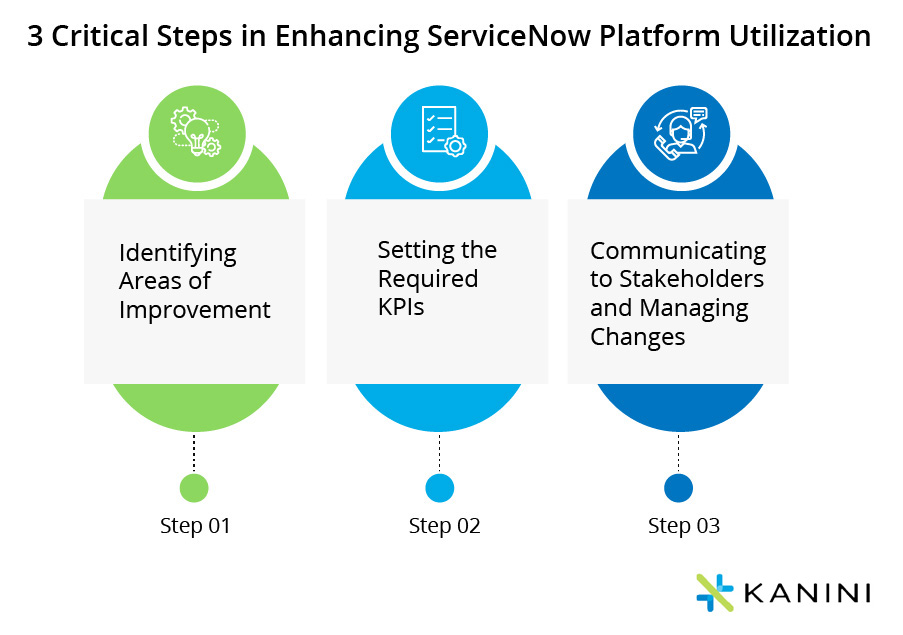Realizing Value from ServiceNow Investments
A platform utilization assessment helps understand how an organization can improve its ServiceNow platform utilization and identify the underutilized functionalities. If they’re not getting the desired value, they need to understand what they should change or incorporate to realize maximum value from their investment. A one-size-fits-all approach would not work to assess ServiceNow platform utilization for every organization. Having a personalized assessment plan to optimize platform utilization based on its unique business requirements is the way to go. Here is a 3-step approach that organizations can adopt to enhance their ServiceNow platform utilization and implement solutions to get the expected value out of it:

1. Identifying Areas of Improvement
2. Setting the Required KPIs
3. Communicating to Stakeholders and Managing Changes
ServiceNow Platform Utilization - Maturity Levels
Focusing on License Optimization in ServiceNow
- With the ServiceNow Performance Analytics application, organizations can get access to reports on licenses utilized and easily understand how user roles are defined within the platform. They can also understand how long users are active on the ServiceNow platform and optimize user roles effectively based on their active status.
- For instance, a particular user, who is not a part of the ITOM team, may still have access to the roles in that team. Organizations can easily solve or optimize such user issues and remove unused licenses with the reports generated on the ServiceNow Performance Analytics dashboard. They can prevent users from accessing all the functionalities in the platform and limit them to specific capabilities based on their roles. Preventing the use of multiple applications for the same purpose or business objective across departments is yet another benefit of utilizing ServiceNow Performance Analytics.
Author

Joshua Smith
Joshua is a process improvement thought leader and digital transformation expert at KANINI. Over the past 15 years, his focus has always been on achieving organizational maturity and enhancing business processes through implementing tools and workflows to drive transformation initiatives. With experience in multiple verticals from – manufacturing to healthcare, Joshua brings a practitioner’s perspective when working on business solutions and goals to allow him to advise and guide on industry and process best practices.








